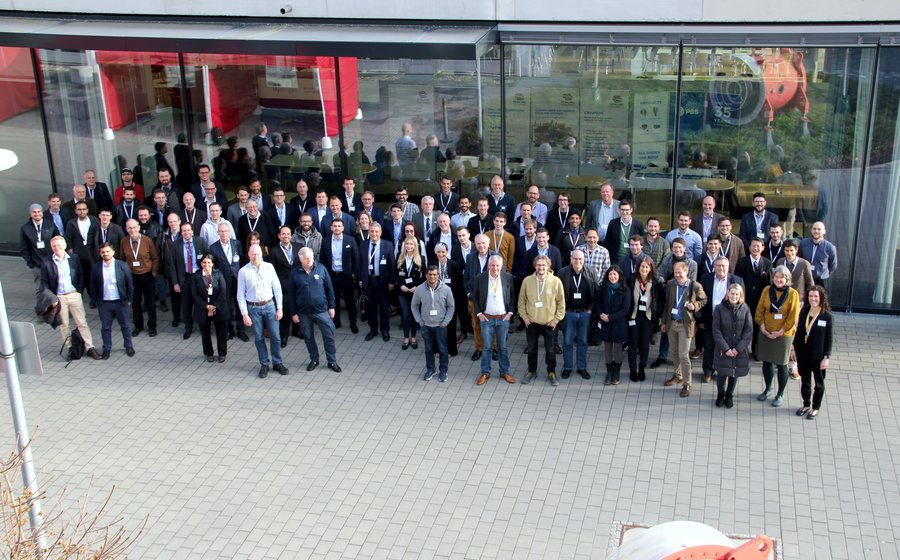Hot discussions on the icy cold — European Cryogenics Days at GSI/FAIR
11.04.2023 |
On two days in March, the European Cryogenics Days (ECD) took place at the GSI/FAIR campus in Darmstadt. The international conference focuses on all topics related to cryogenics, from giant cryogenics applications such as the superconducting FAIR accelerator to hydrogen mobility and lowest temperatures on the tiny scales of cells. Co-hosted by the Cryogenics Society of Europe, the ECDs have been held regularly at various research institutions in Europe since 2015.
The EDC were opened by Professor Paolo Giubellino, Scientific Managing Director of FAIR and GSI, with an introduction to the science of GSI/FAIR. With twenty presentations and many discussion opportunities, the ECD provided a colorful bouquet of topics and a broad forum around the subject. The ECD are always accompanied by an industrial exhibition, where this time ten companies from the field of cryogenics presented their portfolios. For FAIR/GSI and the in-kind partners, this was an opportunity to talk to potential suppliers on site.
Naturally, one of the focusses of the meeting this time was the international FAIR accelerator, which is currently being built in Darmstadt. Numerous presentations reported on the cryogenic infrastructure and cryogenic systems of the future FAIR ring accelerator SIS100 and the fragment separator Super-FRS as well as on the FAIR construction site planning. A highlight was the on-site visit to the FAIR cryogenics facility on the construction site, which is well advanced in its installation.
The FAIR cryogenic plant is one of the largest possible cryogenics plants that can still be built from one unit. In order to guide the particles along their paths, strong magnetic fields are required, which can most efficiently be achieved through the phenomenon of superconductivity. To achieve this, the magnets must be cooled to a temperature of four kelvin (- 269°C). For that purpose, the cryogenic system delivers a maximum flow rate of over 21,000 liters of liquid helium per hour, for a total helium storage of nine tons, with a maximum cooling capacity of 14 kilowatts at four kelvin. (CP)













